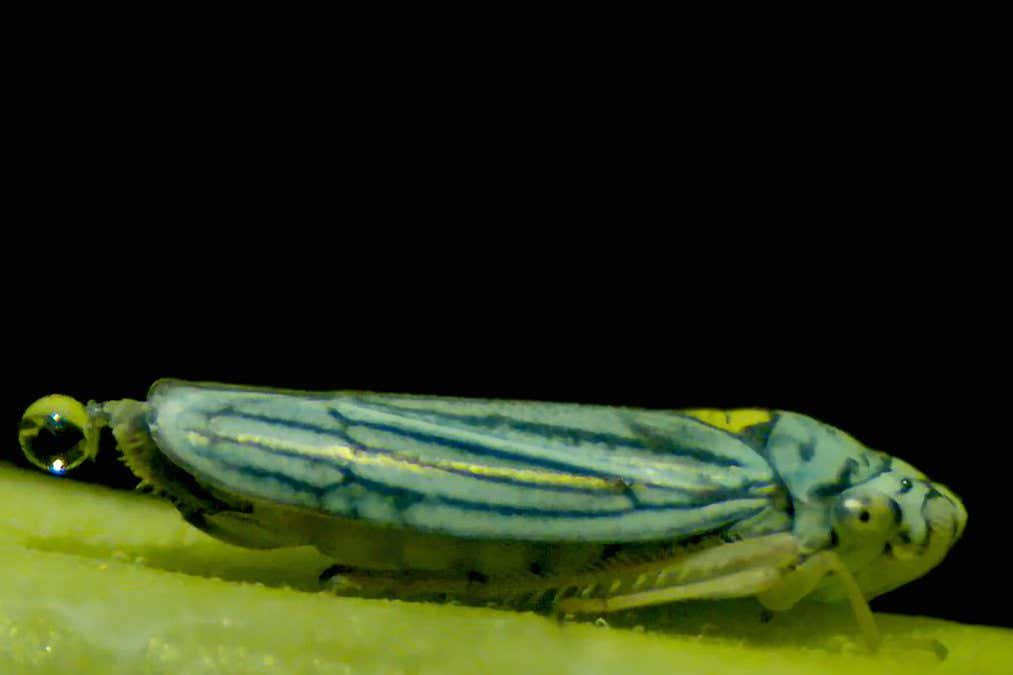Insects' Tiny Bodies, Huge Urine Output: The Anal Catapult
Insects may be small, but their urinary systems are surprisingly powerful. New research reveals the surprisingly efficient – and frankly, bizarre – way insects manage their waste: a powerful anal catapult. This discovery challenges previous assumptions about insect excretion and offers a fascinating glimpse into the intricate world of insect physiology.
For years, scientists have puzzled over how insects, with their minuscule bodies, manage to eliminate waste efficiently. The answer, it turns out, is far more dynamic than previously imagined. Instead of a slow, passive dripping, many insects utilize a rapid, forceful ejection mechanism – a process aptly described as an "anal catapult."
The Mechanics of the Anal Catapult
This remarkable process involves a complex interplay of muscles and bodily fluids. Researchers have discovered that insects build up pressure within their bodies, using specialized muscles to contract and propel waste outwards at astonishing speeds. This isn't a gentle trickle; it's a targeted, high-velocity expulsion. The "catapult" aspect refers to the speed and force involved, allowing insects to effectively clear their systems with minimal effort.
- Muscle Contraction: Specialized muscles surrounding the rectum play a crucial role in generating the pressure needed for expulsion.
- Fluid Dynamics: The precise interplay of body fluids and muscle contractions ensures accurate and efficient waste removal.
- Waste Composition: The composition of insect urine itself – often containing a high concentration of nitrogenous waste – contributes to the expulsion process.
Why is this important?
Understanding insect urination is more than just a scientific curiosity. This research has several important implications:
- Pest Control: Knowledge of insect waste disposal mechanisms could lead to improved pest control strategies. Targeting the insects' urinary systems could be a potential avenue for new insecticides or control methods.
- Evolutionary Biology: The anal catapult highlights the remarkable adaptations found in the insect world and offers valuable insights into the evolutionary pressures that shaped insect physiology.
- Biomimicry: The efficiency and precision of the anal catapult mechanism could inspire new technologies in fluid mechanics and micro-engineering. Imagine the potential for miniaturized, efficient waste disposal systems inspired by insect designs!
Further Research and Future Directions
While significant progress has been made, much remains to be discovered about the anal catapult mechanism. Future research will likely focus on:
- Species-Specific Variations: Determining the extent to which the anal catapult mechanism varies across different insect species.
- Environmental Influences: Investigating how environmental factors, such as temperature and humidity, impact the efficiency of waste disposal.
- Technological Applications: Exploring the potential for biomimicry and the development of novel technologies based on this fascinating process.
The discovery of the anal catapult highlights the astonishing ingenuity of nature. The tiny insects, often overlooked, reveal intricate physiological mechanisms that challenge our assumptions and offer valuable insights into the natural world. This research serves as a reminder that even in the smallest creatures, complex and fascinating processes are at play.
Keywords: Insect urination, anal catapult, insect physiology, waste disposal, biomimicry, pest control, evolutionary biology, fluid mechanics, micro-engineering, insect research.
Call to Action: Want to learn more about the amazing world of insect biology? Explore [link to relevant scientific journal or website].

